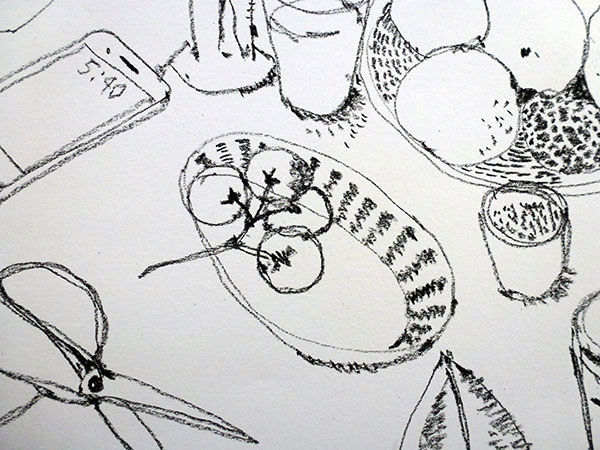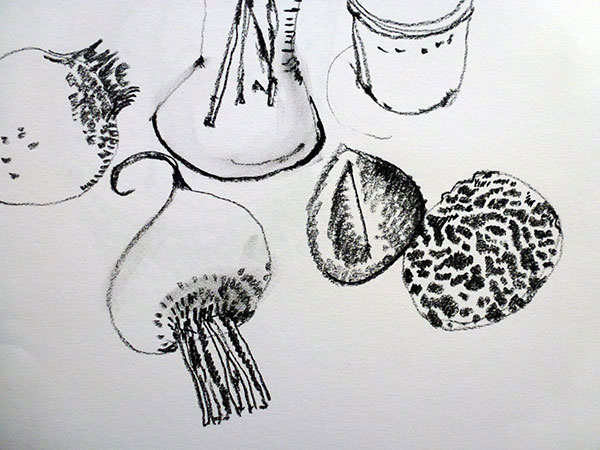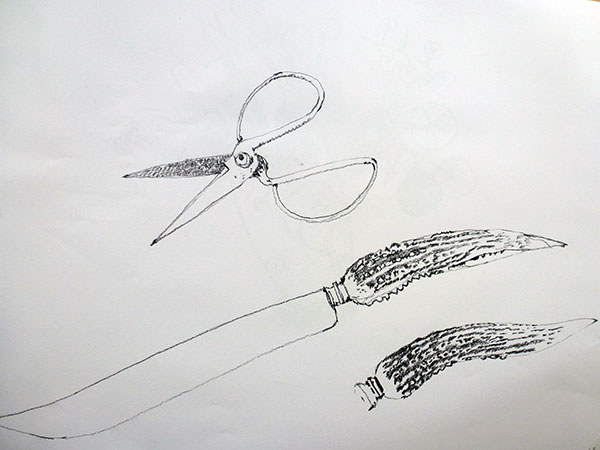Drawing

There are many ways to reflect on the act of drawing: the pleasure it can give, for example, or the shifts in thinking it may bring about. One of the most pleasing things about drawing is its ability to de-interpret. This runs contrary to the idea that a drawing is an interpretation of the subject by the maker, and it is not easy (impossible really, unless you have a medical condition) to forget what a fruit basket means, or a pair of scissors: all that fruit basket and scissor history; all those fruit basket and scissor incidents over a lifetime. But the act of drawing goes some way towards this satisfying way of undoing. What would a pair of scissors be if we could forget what they do, how they are made, what its name implies? Drawing gives you a sense of this other life of objects — an affinity with the object detached (never fully) from its accretions of meaning.
Notes:
A more elegant reflection on drawing by John Berger —
‘A line, an area of tone, is important not really because it records what you have seen, but because it will lead you to see. Following up its logic in order to check its accuracy, you find confirmation or denial in the object itself or in your memory of it. Each confirmation or denial brings you closer to the object, until you are, as it were, inside it: the contours you have drawn no longer marking the edge of what you have seen, but the edge of what you have become.’
John Berger
Permanent Red: Essays in Seeing (1960)
Republished in Landscapes: John Berger on Art (2016)
Drawings: GS.


